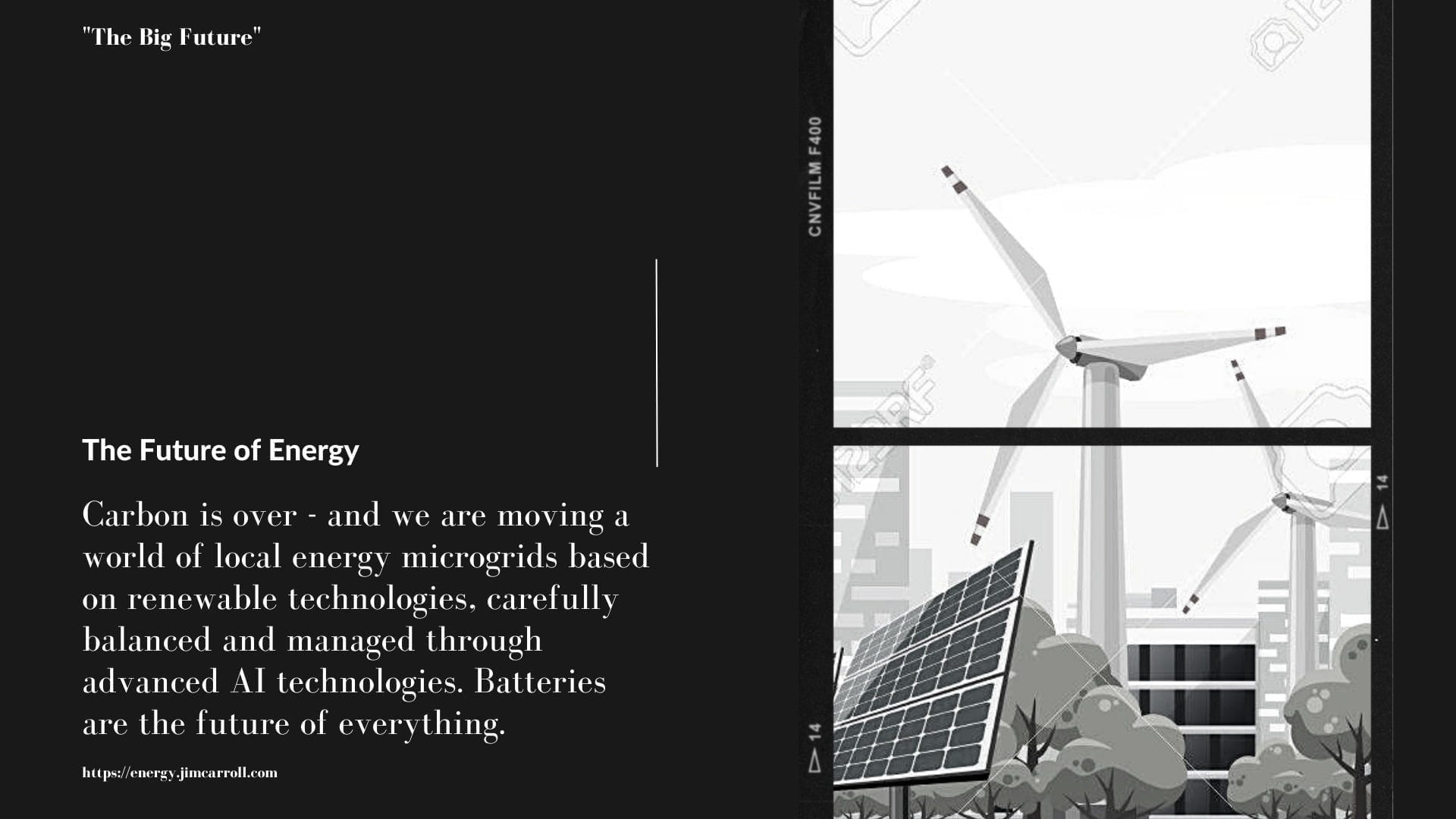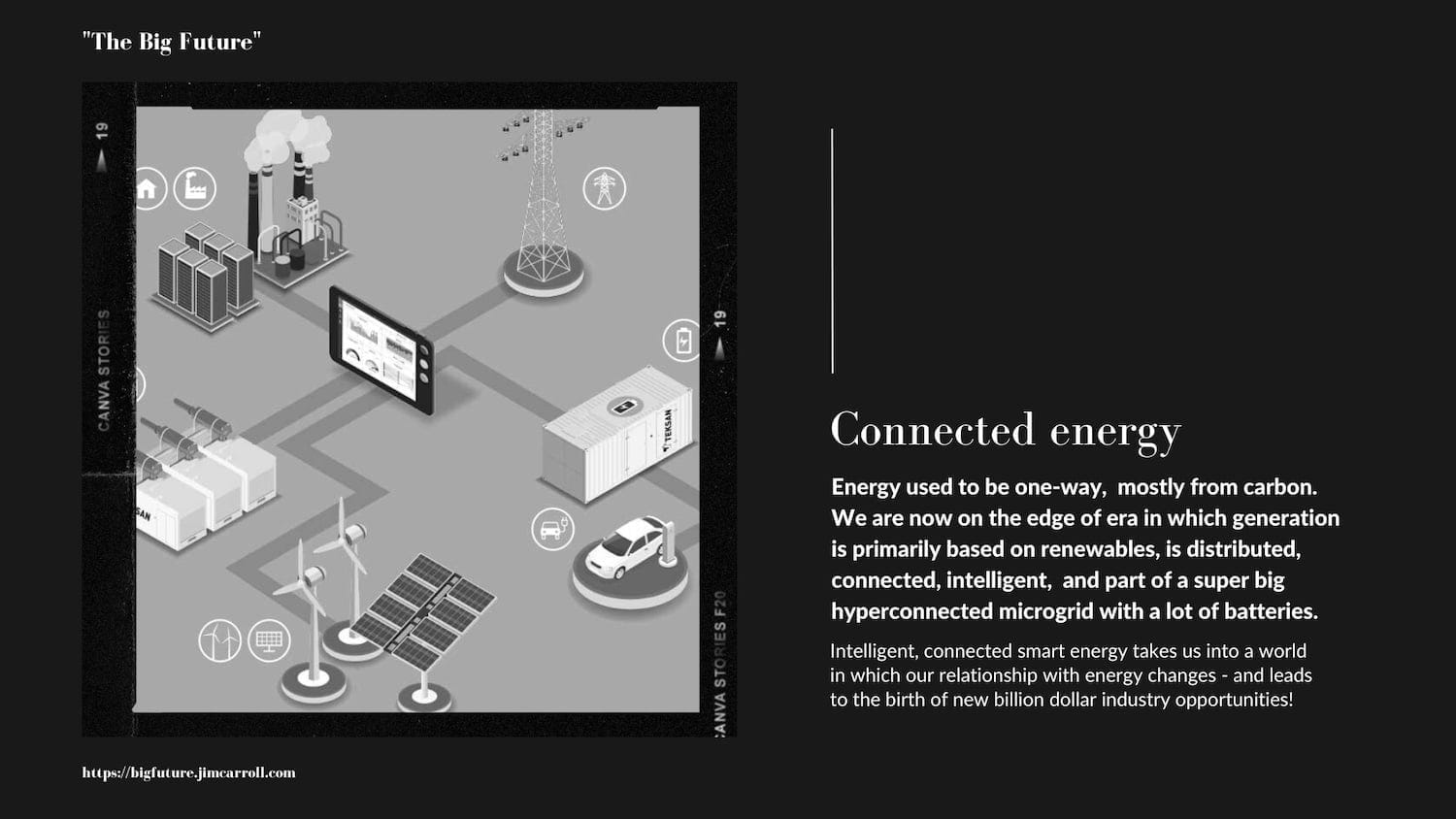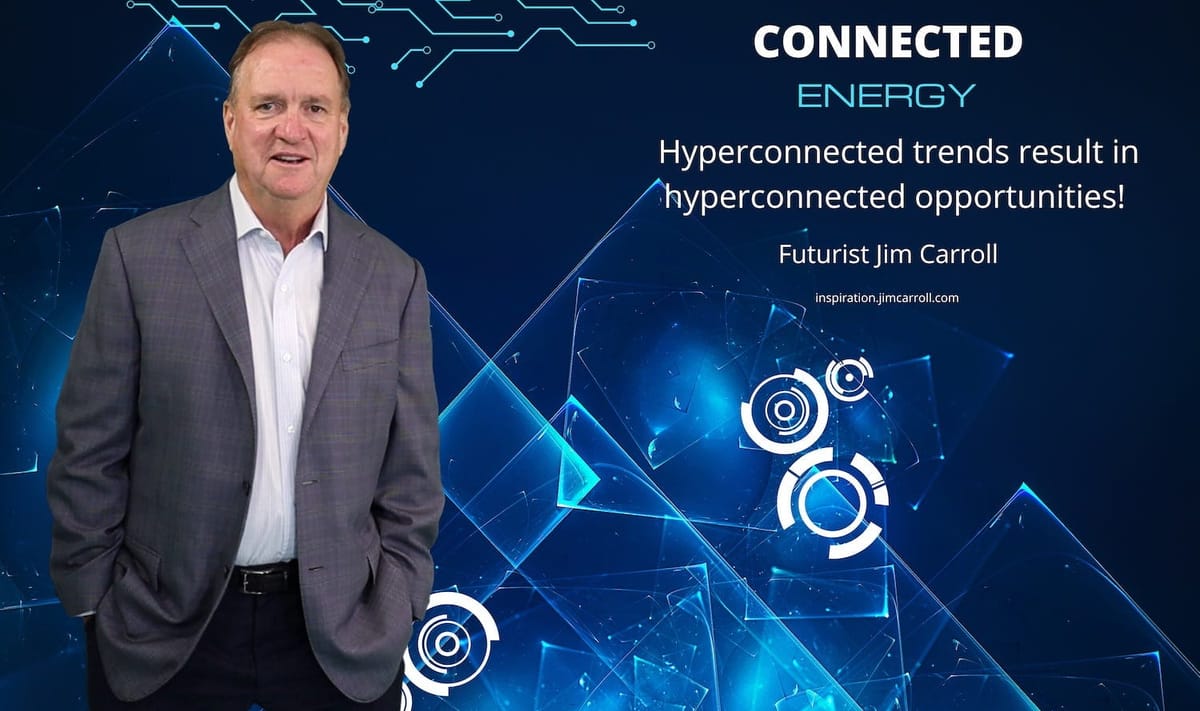If you are trying to figure out the impact and opportunities of AI, the promise and the potential, the peril and the risk, you need to go "beyond ChatGPT."
And to do that, you need to understand that in many industries, AI is bringing together many trends that involve connectivity - hyperconnectivity - leading to new, hyperconnected trends. With that in mind, I'll reshare some insight I previously posted over in my AI Megatrends series. It should energize you for your energy future!
Because after all, nowhere is the world of hyperconnected trends more evident than what is happening in the world of energy.
Prior to the arrival of large language models (LLMs) as seen with technologies like ChatGPT, the use of AI within the world of energy, particularly energy utilities and the electrical grid was defined by the massive data sets derived from the connectivity of the grid; the acceleration of renewables and grid technology that required the use of AI for management of variable power generation; and other similar trends.

Google 'big data and energy' and you can get a sense of what was happening. The phrase 'smart grid' was with us for years - and much of the 'smart' within the grid already involved AI.
Today? There is a lot more yet to come.
Understanding the Smart Grid and the Future of Energy
I described the future of energy in this way within my Big Future series:

In essence, we are headed to a world of 'connected energy,' which was what I covered within that series - and there's where most of the impact of AI is to be found. Understand the 'connected energy' trend, and you'll understand the real role of AI in the energy/utility industry.
Trend: The Arrival of the Era of Connected Energy
Bottom line: energy in our electrical system used to be one-way and was mostly from carbon. We are now on the edge of an era in which it is becoming a two-way system, with generation primarily based on renewables, distributed, connected, intelligent, and part of a super big hyperconnected microgrid with a lot of batteries. And AI plays a huge role already and an even bigger role in this new energy grid going forward.
For lack of a better term, I called it intelligent, connected smart energy, and it takes us into a world in which our relationship with energy changes - and leads to the birth of new billion-dollar industry opportunities!

What's happening?
Essentially, we are building a new energy grid, launching new industries, changing entire mobility platforms (automotive and trucking), and setting a path to a cleaner energy future. Much of this is currently happening in isolation, but over the decade to come, a lot of connectivity of these disparate platforms and trends is going to occur. It's already underway as smart innovators build out a fascinating new future.
In a nutshell:
- carbon is over as solar, wind and renewable energy comes to dominate our future
- commercial, industrial, and residential properties are going to see the arrival of more battery storage technology to store this energy, smoothing out the dips and spurts that come with this generation
- most new cars and trucks will be electric within a decade as the era of gasoline and diesel energy comes to an end
- the batteries in those cars and trucks will come to be a part of the energy storage solution in these locations
- on top of that, most homes are getting smart appliances with the potential for connectivity and better management of their energy usage
- at the same time, factories and industrial facilities are getting a lot of interconnected devices through iiOT (Industrial Internet of Things) technology that also allows for intelligent energy management
- the home thermostat, which has gained intelligence through devices like the Nest and ecobee thermostats, is about to take on a larger role in managing this internal home energy grid
- at the same time, sophisticated platforms for energy management in industrial, commercial, and factory locations will do the same thing
- all of this provides a little energy grid within the home and in these industries/commercial facilities, providing a form of energy independence
- and a key component is that any excess energy within this grid will be fed back out into the large utility grid to provide it with additional power, transitioning it from a one-way to a two-way systems
- this grid connectivity also provides the opportunity for local community microgrids - you've got a grid, I've got a grid - let's connect our grids
I told this story when booked by the CEO of the California energy giant PG&E a number of years ago:
It's in that type of thinking that this new industry is unfolding. There are so many different opportunities it is staggering:
- grid-connected energy storage. Essentially, great big batteries store energy generated by the distributed energy resources in the system. Solar is only generated while the sun is up, and wind energy only happens on a windy day - but grid-connected energy storage solves this problem. There is a huge amount of investment, innovation, initiative, and idea generation going into this - as I explained many years ago, "The Future of Just About Everything is all About Batteries."
- HEMS or home energy management systems - We will see the evolution of a "home energy ecosystem," in which later versions of Nest and ecobee will not only let individuals adjust and manage the temperature of their homes but will manage and monitor the storage of electricity generated on their rooftop solar panels, as well as mediate and manage the sale of that energy back to the local power company or a local power grid. In addition, HEMS devices will help to automatically deliver cost and carbon savings from intelligent appliances and other in-home electrical devices, offering up power-saving recommendations.
- new energy management software platforms: there's a lot of software to make this super-intelligent microgrid system work. With that in mind, consider ampOS, an energy management platform that helps to assess the health of industrial-scale battery packs, vehicle-to-grid connecting, and leasing groups for warranties and insurance
- "EaaS" - or "Energy as a Service." This new grid involves not only new energy sources but new energy uses including electric vehicles. In that context, consider UgoWork, a Quebec, Canada company that has an AI-based software platform that provides for easier management of the large-scale fleet deployment of batteries
- battery recycling: most electric vehicle batteries are designed for a lifespan of about 12 years before they lose efficiency, but they can be repurposed and reused in microgrid energy storage solutions for a 'second life'. One company, Connected Energy in the UK, has equity investment from Volvo, Caterpillar, and others, who recognize the emerging secondary market for used batteries. Connected Energy will specialize in taking old car batteries and building them into large-scale commercial energy storage systems.
These are just a few of the components of what is underway. All of this involves the development of a lot of communication protocols, technical standards, interoperability methodologies, and security standards.
What it represents?
Within this trend are several massive opportunities. I've often liked to point out that in many industries, this is the big disruption:
Companies that do not yet exist will build products not yet conceived, with materials not yet in existence, using methodologies not yet developed - and these will be sold to consumers who do not yet know that these new products and services will become a critical part of their life.
Suffice it to say, we will wake up within a decade and realize a vast number of new industries and companies were born.
Futurist Jim Carroll has always been fascinated by the fact that most people never look beyond the current 'hot' trend to find the even bigger trend.

